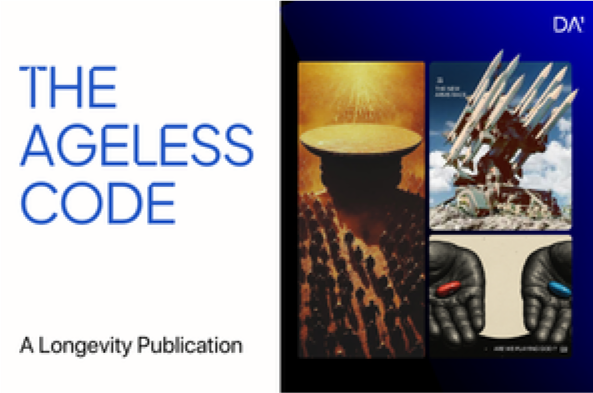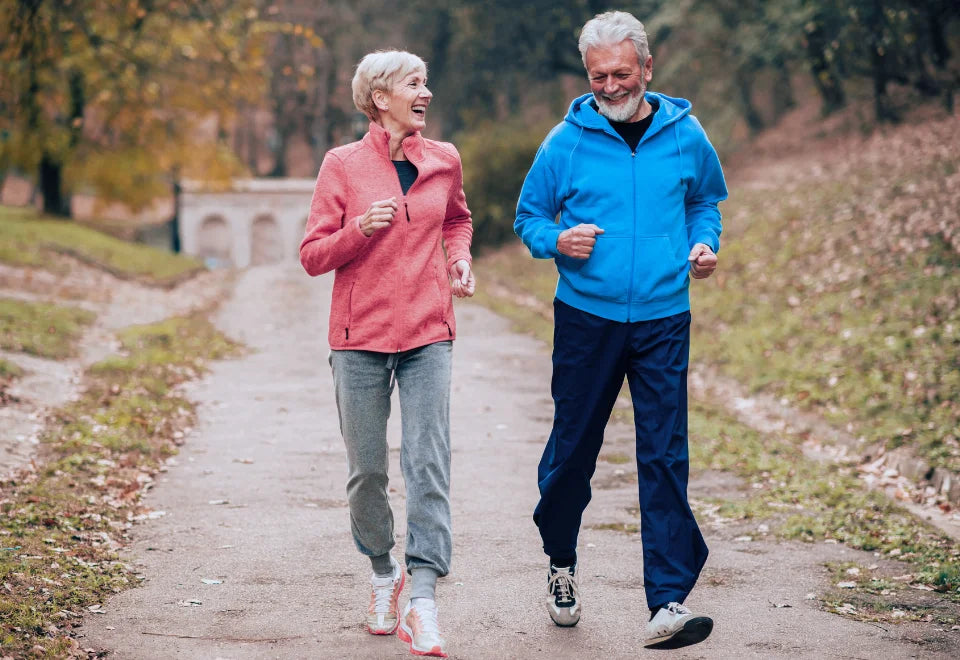Had a chance to watch the documentary "Live to 100: Secrets of the Blue Zones"? It has the secrets to how to live a long life!
Centenarians, individuals who reach the remarkable age of 100 and beyond, exist in various parts of the world. However, there are only a few areas where their concentration is exceptionally high, leading to these regions being considered "longevity hotspots." The quest to study these areas and their populations is not a new move towards exploring longevity. In the 1970s, an article in National Geographic highlighted a few hotspots. Despite initial excitement, further scrutiny revealed age exaggeration among the oldest individuals in these areas. As a result, these regions were no longer considered genuine longevity hotspots.
These hotspots are "Blue Zones" which refer to regions with the highest concentration of long-lived cultures and the shared traits that contribute to the longevity of their residents. In this blog, we'll get into the various Blue Zones, their histories and the principles of healthy living that have found the answer to how to live a long life!
Discovering and Identifying Blue Zones
The concept of Blue Zones was introduced by Dan Buettner, CEO of Blue Zones LLC, following his 2004 exploratory project. Buettner's initial investigation in 2000 focused on Okinawa, Japan, renowned for its longevity, inspiring him to seek out other regions with similar traits. Buettner teamed up with scientists and demographers and embarked on a global journey to discover communities through demographic analysis and interviews with centenarians.
The notion of Blue Zones was further solidified by the work of Gianni Pes and Michel Poulain, who identified Sardinia, Italy, as a region with a high concentration of male centenarians. They marked these areas on the map with concentric blue circles, hence the term "Blue Zones" to denote regions that have mastered the art of how to live a long life. Buettner's team collaborated with Pes and Poulain and identified additional longevity hotspots worldwide, all classified as Blue Zones.
Power 9 in Blue Zones Lifestyle
The research revealed nine specific blue zones lifestyle changes, known as the Power 9, underscoring the importance of these practices in promoting longevity and well-being:
Move naturally
The world's longest-lived individuals don't engage in strenuous exercise like weightlifting or marathon running. Instead, they inhabit environments that naturally encourage movement. They cultivate gardens and manually perform household and yard work, without relying on mechanical conveniences.
If you want to adopt a more active lifestyle, consider introducing small inconveniences daily. You should engage in activities that can also promote natural movement. Additionally, reducing reliance on electronics and power tools that simplify tasks can help reintroduce physical activity into your daily routine.
Purpose of Life
The concept of "Ikigai" for the Okinawans and "plan de vida" for the Nicoyans embodies the idea of "why I wake up in the morning," reflecting a sense of purpose that significantly impacts longevity. Research suggests that understanding and embracing your purpose can extend your life expectancy by up to seven years.
You can explore your sense of purpose, and begin by reflecting on your life experiences. Identify your values, passions, and talents, as well as activities you enjoy and those you don't. Consider how you can leverage your skills to contribute meaningfully to your life and the lives of others. By aligning your actions with your purpose, you can cultivate a sense of fulfilment that may enhance your overall well-being and longevity.
Downshift
While stress is unavoidable, it's how we manage it that matters. Chronic inflammation, often triggered by stress, is linked to major age-related diseases. What sets the world's longest-lived people apart is their dedication to stress-relieving routines. For example, Okinawans honour their ancestors daily, Adventists engage in prayer, Ikarians prioritize napping, and Sardinians enjoy a daily happy hour.
To incorporate stress relief into your life, find a practice that suits you, such as yoga or meditation, and make it a regular part of your routine. Not only can this help reduce inflammation, but it can also improve your overall physical and emotional well-being.
80% Rule
The Okinawans practice "hara hachi bu," a 2500-year-old Confucian mantra, reminding them to stop eating when they are 80% full in their longevity diet. This mindful eating habits allows for a 20% gap between not feeling hungry and feeling full, which can make a significant difference in weight management. According to the Blue Zones diet, people typically consumes their smallest meal in the late afternoon or early evening and then refrain from eating for the remainder of the day.
You can adopt similar eating habits, consider using smallest plates and taller, narrower glasses to help control portion sizes. Removing TVs from the kitchen can also reduce mindless eating distractions. By incorporating these practices, you can align your eating habits with those of the Blue Zones, potentially promoting better weight management and overall health.
Plant Slant
In the Blue Zones diet, beans play a central role, with varieties like black soy, and lentils being staples. Meat is enjoyed occasionally, the focus is on a rich variety of fresh fruits and vegetables, which are abundant in disease-fighting nutrients.
If you want to choose to include meat in your diet, it's recommended to view it as a condiment rather than a main course. Opt for lean cuts and limit consumption to no more than twice a week. Nuts are also emphasized, with a daily handful potentially extending life expectancy by 2-3 years. You can incorporate these dietary habits that can help align your eating patterns with the longevity diet followed in Blue Zones.
Wine at 5
In Blue Zones, except for Adventists, moderate and regular alcohol consumption is common and associated with the longevity diet. Studies show that moderate drinkers tend to outlive non-drinkers. The key is moderation, with the recommended intake being 1-2 glasses per day, preferably of Sardinian Cannonauwine, and enjoyed in the company of friends or with food. It's important to note that saving up drinks for a weekend binge is not advised.
While research often highlight the benefis of abstaining from alcohol, a glass of wine is valuated in Blue Zones not just for its health benefits, but also for the social connections it fosters. Moderate alcohol consumption is typically part of a social context in these cultures, emphasizing the importance of community and celebration. Enhancing your happiness through socializing can be as simple as sharing a meal or meeting for a cup of tea or coffee. Taking time to unwind with loved ones after work can serve as a daily de-stressor and contribute to overall well-being.
Right Circle
Longevity is often tied to the social circles one belongs to. The world's longest-lives individuals are either born or actively created communities that support healthy blue zones lifestyles. Ikarians, for example, benefits from close-knit communities that regularly socialize, while Okinawans from "moai" groups of five friends who pledge lifelong support to each other.
You need to choose he right social circles, as it can have a profound impact on your well-being. Surrounding yourself with friends who support healthy behaviors can be more beneficial than any other factors in extending your life. By assessing your social connections and actively seeking out positive influences, you can enhance your chances of living a longer and healthier life.
Loved Ones First
Centenarians in the Blue Zones prioritize their families, often keeping ageing parents close or within their homes. This practice not only fosters strong family bonds but also has tangible health benefits, reducing disease and mortality rates among children in the household. Additionally, committing to a life partner highlights the importance of stable, supportive relationships. Investing time and love in their children is another key aspect of longevity for those in the Blue Zones.
In addition to professional responsibilities, it's crucial to spend quality time with loved ones, as they play a vital role in overall well-being. You need to prioritize family and cultivate meaningful relationships that can contribute significantly to a long, fulfilling life.
Belong
Belonging to a faith-based community is a common trait among centenarians, with research indicating that attending services four times a month can add 4-14 years to life expectancy, regardless of denomination.
It’s good if you're already part of a group. However, if it's been some time or you're unsure where to begin, consider asking friends and neighbours for suggestions. Reconnecting with

5 Blue Zones of the World
These five Blue Zones or longevity hotspots around the world are renowned for their high concentration of centenarians who adhere to the Power 9 principles and longevity diet, offering insights into longevity and healthy living.
Sardinia, Italy
Sardinia was the first “Blue Zone” found by Buettner and his colleagues in 2004.
Residents of Sardinia live an energetic lifestyle, hunting fish and harvesting the majority of daily sustenance locally. The population consumes a mostly balanced diet of whole-grain bread, legumes, organic veggies, fruits, and mastic oil, and all are beneficial to overall health.
Plus they love drinking wine! Known for its resveratrol content, a potent anti-ageing compound commonly found in grapes, cranberries, peanuts, and even cocoa.
Okinawa, Japan
Okinawans are lucky to have exceptionally low incidences of malignancy, cardiovascular disease, as well as dementia when compared to the rest of the world. Their lifespan is partly credited to robust social bonds and a strong likelihood towards daily responsibilities.
Elderly Okinawans express why it is imperative to get up at dawn. Their purpose-filled lives provide them with distinct duties giving them a sense of responsibility, believed to be followed- long into their 100s.
The Nicoya Peninsula, Costa Rica
Nicoyans consume small meals. For most of their existence, the centenarians of this place consumed a typical Mesoamerican cuisine centred on agriculture's three siblings- squash, maize, and legumes.
Their determination to live cheerfully every day has benefited this community with additional years to live. Essentially, for them, it also comes down to having deep familial relationships, a sense of purpose each day, and eating a balanced diet.
Ikaria, Greece
One in every three inhabitants here lives into their 90s. The Greek island of Ikaria has fewer than 10,000 inhabitants and makes a healthy lot. According to data they are practically devoid of dementia and chronic diseases.
Researchers attribute this to their social-centric culture, exercise levels Mediterranean diet, and appreciation of a glass of good wine. They exercise for longevity by just gardening, walking to their neighbours' houses or doing their yard work. The lesson to us: engineer more mindless movement into our lives.
Loma Linda, California
This region has been a national centre of health and wellness research for over a decade. The staunch Adventist community here outlives the average American by 10 years. Their longevity could be attributed to their food habits, regular exercise for longevity, no smoking and no alcohol. Taking their diet directly from the Bible they consume a vegan diet.
They follow a regular regime of low-intensity exercise like daily walks to reduce the chances of heart disease and certain cancers. They value personal relationships sharing each other’s values and support each other’s habits to improve their well-being.
Conclusion
The Blue Zones offer valuable lessons on living long, healthy lives beyond 100 years by following the Power 9 principles. These regions demonstrate the profound impact of lifestyle choices and social connections on longevity. They remind us that a purposeful life, strong social ties, and healthy habits can lead to a fulfilling and extended lifespan. Perhaps the true secret to a long and fulfilling life lies not in chasing immortality, but in cherishing each moment and living with purpose and connection.
FAQs
What are the 5 Blue Zones of the world?
The five Blue Zones of the world are Sardinia, Italy; Okinawa, Japan; Nicoya, Costa Rica; Icaria, Greece; and Loma Linda, California. These regions have been studied for their healthiest lifestyles promoting vitality and longevity. The term "Blue Zones" originated from Gianni Pes and Michel Poulain's work, marking these areas on maps with concentric blue circles.
Who discovered Blue Zones?
The concept of Blue Zones was developed by Michel Poulain, Dan Buettner, and Giovanni Mario Pes during their research on communities with exceptional longevity. Dan Buettner, CEO of Blue Zones LLC, introduced the concept following his 2004 exploratory project. Blue Zones is now a registered trademark owned by Blue Zones, LLC.
What is the concept of Blue Zones?
The concept of Blue Zones refers to geographic regions characterized by lower rates of chronic diseases and longer life expectancy. These areas adhere to the Power 9 principles, emphasizing factors such as diet, fasting, and exercise, which contribute to the health and longevity of their residents.
What is the 80 rule in Blue Zones?
The 80 rule in Blue Zones refers to the Okinawan practice of "hara hachi bu," which means to stop eating when you are 80% full. This strategy is associated with better heart health, longevity, and weight management, as it helps prevent overeating and promotes mindful eating habits.
What is a blue zone lifestyle?
A Blue Zone lifestyle involves consuming more plant-based foods and fewer processed foods, limiting screen time, incorporating daily movement, prioritizing family, faith, and community, and making time for relaxation and unwinding. These practices contribute to overall health, longevity, and well-being.

























Leave a comment
All comments are moderated before being published.
This site is protected by hCaptcha and the hCaptcha Privacy Policy and Terms of Service apply.